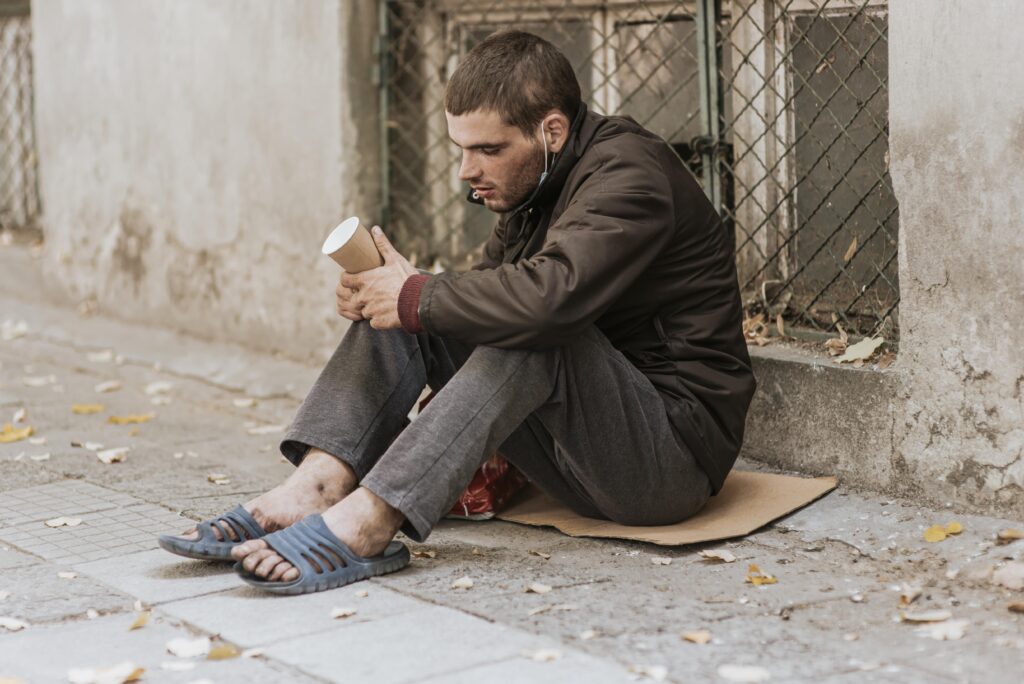
Child Trafficking in Canada
Youth homelessness is a growing problem that affects thousands of young people in Canada and around the world. Data reveals that in Canada alone, there are as many as 7,000 homeless youth on any given night.
Without a safe place to call home, these young people face daily struggles that many of us can’t imagine. But there’s more to this story. Homeless youth are also at high risk of being targeted by traffickers. It’s a heartbreaking reality, but one we have the power to change.
In this blog post, we’ll explore the link between youth homelessness and child trafficking in Canada, share inspiring stories of resilience, and show how we can collectively make a difference.
Understanding Youth Homelessness
Take a closer look at the factors driving youth homelessness and how it impacts vulnerable young people.
Youth Homelessness: An Overview
Youth homelessness occurs when young people, typically aged 16 to 24, have no stable or safe place to live. This can mean living on the streets, staying in shelters, or bouncing between friends’ homes. It’s a serious issue that affects thousands of young people across Canada.
Causes of Youth Homelessness
Youths become homeless for many reasons. Family conflict is a major cause—problems at home such as abuse, neglect, or family breakdown can push young people out. Poverty is another big factor—when families struggle to make ends meet, young people may be forced to leave.
Additionally, mental health issues and substance abuse play a role. Without proper support, young people with these challenges may end up on the streets.

Dangers of Youth Homelessness
Homeless youth are extremely vulnerable. Without a home, they lack basic needs like food, clothing, and safety. They are also at higher risk of exploitation, including being targeted by traffickers. Life on the streets can be dangerous and isolating, making it hard for these young people to find help or escape their situation.
The Link Between Youth Homelessness and Child Trafficking
Exploring the connection between child trafficking and youth homelessness.
Child Trafficking in Canada: An Overview
Child trafficking is a form of modern-day slavery where children are bought, sold, or forced into work against their will. This can include labor, sexual exploitation, or other illegal activities.
In Canada, child trafficking is a devastating crisis that too often goes unnoticed. Many victims are young, vulnerable, and without support, making them prime targets for traffickers.
Social media has become a gateway for traffickers, making it easier than ever for predators to connect with vulnerable youth. Through online platforms, traffickers can quickly build trust, manipulate, and lure young people into dangerous situations, often pretending to be friends or protectors.
Why Homeless Youth Are at Risk

Homeless youth are particularly vulnerable to child trafficking. Lacking a stable home or support network, they are easily exploited by traffickers who lure them with promises of shelter, food, and security.
Traffickers often earn the trust of these vulnerable youth by offering essential needs like shelter and security, only to exploit them later. Once lured in, it becomes incredibly difficult for these young people to break free from the cycle of abuse and manipulation.
For example, some traffickers present themselves as friends or protectors, offering shelter in exchange for labour or sexual exploitation. Others resort to threats or violence to maintain control over their victims. Tragically, many homeless youths feel trapped, seeing no way out and believing they have no choice but to comply.
Real-life stories shared by organizations working on the ground show how dire this situation can be. One case involved a young girl who was lured into trafficking after being promised food and shelter. Her story is a reminder of the dangers homeless youth face every day.
Breaking the Cycle – A Story of Resilience and Recovery
Monique’s 30-year journey as a foster parent with CASDSM exemplifies the power of resilience and recovery in breaking the cycle of youth homelessness. She and her husband have transformed their home into a sanctuary for children with exceptional needs, including a 23-year-old autistic individual they’ve cared for since they were 7.
Monique’s commitment to fostering is driven by a deep passion for helping children, influenced by her own family’s experiences with foster care and adoption.
Her story illustrates the profound impact a stable, caring environment can have on vulnerable youth. Despite facing serious challenges, such as allegations from some youths, Monique finds immense fulfilment in witnessing the healing and growth of the children she has cared for.
Her experiences underscore the importance of providing safe spaces to protect these young people from the dangers of homelessness and trafficking. Monique’s dedication highlights how fostering can break the cycle of instability and offer a path to recovery for at-risk youth.
This personal account connects deeply with the broader issue of youth homelessness, emphasizing the critical need for supportive homes and the difference they can make in a child’s life.
Actionable Steps You Can Take To Help
Here, we’ll investigate some effective ways to help youth homelessness.
Supporting Local and National Organizations
One of the most powerful ways to help homeless youth is by supporting organizations that are on the front lines. In Canada, many groups work tirelessly to combat youth homelessness and trafficking. These include Covenant House, The Push for Change, Sudbury and Area Victims Services, and the organization behind this blog.
These groups provide shelter, support, and a chance for a better life for vulnerable youth. You can make a difference by donating, volunteering, or joining their advocacy campaigns. Every contribution helps these organizations continue their vital work.
Raising Awareness
Raising awareness is another crucial way to help. Many people are unaware of the connection between youth homelessness and trafficking, but you can make a difference. Begin by sharing this blog post with your friends and family.
Social media is a powerful tool for raising awareness. You can also attend local events or seminars focused on homelessness and trafficking. The more people know about these issues, the more we can work together to find solutions.
Advocating for Policy Change
Policy change is key in the fight against youth homelessness and trafficking. By advocating for stronger laws and better funding for support programs, you can help create lasting change.
Write to your local representatives, sign petitions, and support campaigns that advocate for more resources and protections for homeless youth. Additionally, push for stronger human trafficking prevention measures to safeguard vulnerable children from exploitation. Your voice matters, and when we unite, we can influence the policies that shape our communities and protect those at risk.
Final Words
Youth homelessness and child trafficking in Canada are urgent, deeply troubling crises, but together, we have the power to make a lasting impact. By supporting frontline organizations, raising public awareness, and pushing for policy reforms, we can protect vulnerable youth from exploitation and give them hope for a safer future. Every action, no matter how small, can create change. Start by sharing this post to raise awareness and inspire others to join the fight.
